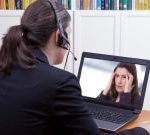
All-terrain vehicles (ATVs) are a big draw for adventure-loving kids, but a new study warns that the thrill ride can often land children in the ER. U.S. data shows that nearly 280,000 children were treated over a 25-year period for head and neck injuries caused by ATV accidents. That’s about 31 children each day — and nearly half of them were younger than 12, the researchers reported. “I think it largely confirmed what we were concerned about, which was how frequent these injuries were occurring and how serious they were,” said Dr. Gary Smith, director of the Center for Injury Research and Policy at Nationwide Children’s Hospital in Columbus, Ohio. The fact that 46% of ATV-related head and neck injuries among kids occurred among those aged 12 or younger was particularly worrisome, Smith said. “These are large, powerful machines. They’re designed for off-road use. By definition, when you take this type of powerful machine off road, it requires an advanced degree of coordination, strength and moment-to-moment decision-making on uneven terrain,” Smith said. “And a child at 12 years of age just simply doesn’t possess that degree of skill. They just developmentally aren’t ready.” That’s true even for the lighter, smaller ATVs designed for kids, Smith added. The study looked at data from the U.S. National Electronic Injury Surveillance System to research injuries over a 25-year… read on >



































